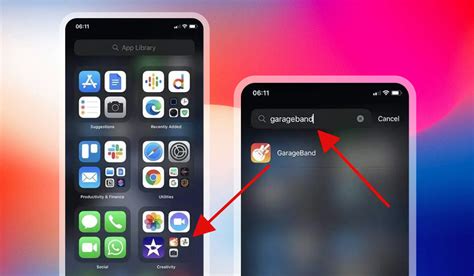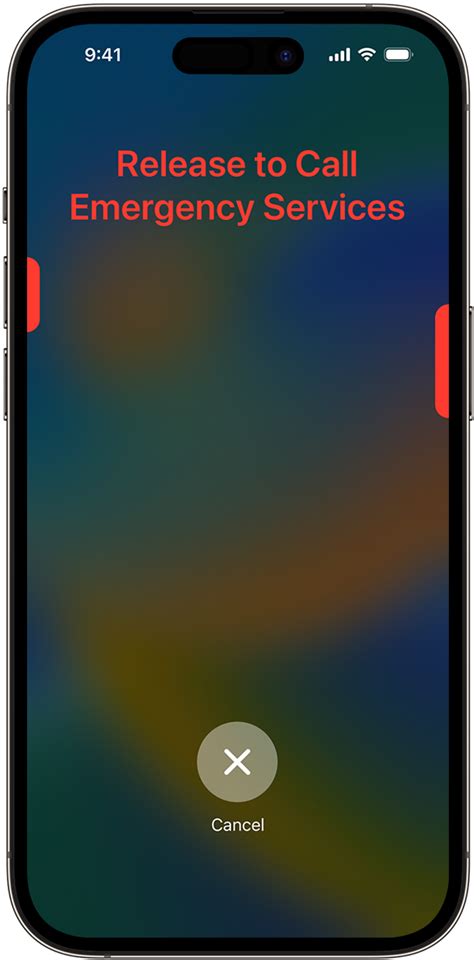
Apple’s Measure app, often overlooked by iPhone users, quietly leverages augmented reality (AR) technology to provide quick and surprisingly accurate real-world measurements, serving as a convenient digital alternative to traditional tools like rulers and tape measures.
Apple’s “Measure” App: An Underutilized iPhone Powerhouse
While the iPhone boasts a plethora of features, from its advanced camera system to its seamless integration with the Apple ecosystem, one built-in app often remains hidden in plain sight: Measure. This unassuming app, pre-installed on iPhones, harnesses the power of augmented reality (AR) to transform your device into a virtual measuring tool. It allows users to quickly and easily measure real-world objects and spaces, offering a digital alternative to traditional measuring tapes and rulers.
The Measure app’s functionality extends beyond simple length measurements. It can automatically detect the dimensions of rectangular objects, calculate the area of surfaces, and even provide estimations for a person’s height. Its intuitive interface and ease of use make it a valuable tool for a variety of everyday tasks, from home improvement projects to quick on-the-go estimations.
According to Apple, the app uses the iPhone’s camera and motion sensors to create a virtual representation of the user’s surroundings. By analyzing the visual data and tracking the device’s movement, the app can accurately determine the distance between two points or the dimensions of an object.
How the Measure App Works
The Measure app’s accuracy relies on the iPhone’s AR capabilities, which have significantly improved over the years. The app utilizes Apple’s ARKit framework, which provides developers with the tools to create immersive AR experiences. When the app is launched, it uses the iPhone’s camera to scan the environment and identify surfaces. Users are then prompted to place a virtual anchor point on the screen, which serves as the starting point for the measurement. By moving the iPhone and placing another anchor point, the app calculates the distance between the two points and displays the measurement on the screen.
The app also offers a “vertical measurement” feature, which allows users to measure the height of objects or people. To use this feature, users simply point the iPhone at the object or person they want to measure, and the app automatically estimates the height.
Beyond Basic Measurements: Advanced Features and Use Cases
While the basic functionality of the Measure app is straightforward, it also offers several advanced features that enhance its versatility.
- Automatic Measurement of Rectangular Objects: The app can automatically detect rectangular objects, such as tables, picture frames, and rugs, and display their dimensions without requiring users to manually place anchor points.
- Area Calculation: The Measure app can calculate the area of a surface by tracing its outline. This feature is particularly useful for estimating the amount of paint needed for a room or the amount of flooring required for a renovation project.
- Level Tool: The Measure app includes a built-in level tool that allows users to ensure that surfaces are perfectly horizontal or vertical. This feature is particularly useful for hanging pictures or installing shelves.
- Save Measurements: Users can save their measurements for future reference, making it easy to track progress on projects or compare different options.
- Object Height Measurement: The app can accurately measure the height of a person using its AR capabilities and advanced algorithms.
These features make the Measure app a valuable tool for a wide range of use cases, including:
- Home Improvement: Measuring rooms for furniture placement, calculating the amount of paint or flooring needed for a project, and ensuring that objects are level.
- Interior Design: Estimating the dimensions of furniture, visualizing how different pieces will fit in a space, and creating floor plans.
- Real Estate: Quickly measuring rooms and spaces when viewing properties.
- Education: Teaching students about measurement and geometry.
- DIY Projects: Measuring materials and components for various projects.
Accuracy and Limitations
While the Measure app offers a convenient and user-friendly way to take measurements, it’s important to understand its limitations in terms of accuracy. According to Apple, the app is designed to provide estimations rather than precise measurements. The accuracy of the measurements can be affected by several factors, including lighting conditions, surface textures, and the user’s technique.
“Measurements taken with Measure may not be precise and should not be relied upon in circumstances where even small inaccuracies could cause damage or injury,” warns Apple.
Despite these limitations, the Measure app is generally considered to be accurate enough for most everyday tasks. In tests, the app has been shown to provide measurements that are within a few centimeters of the actual dimensions. For more precise measurements, it’s still recommended to use traditional measuring tools.
The Measure App’s Evolution and Future Potential
The Measure app has undergone several improvements since its initial release, with each iteration bringing enhanced accuracy and new features. Apple continues to invest in AR technology, and it’s likely that future versions of the Measure app will offer even more advanced capabilities.
Potential future enhancements could include:
- Improved Accuracy: Advancements in AR technology and sensor technology could lead to more accurate measurements.
- 3D Scanning: The ability to create 3D models of objects and spaces.
- Integration with Other Apps: Seamless integration with other apps, such as design and construction software.
- Collaboration Features: The ability to share measurements and collaborate with others on projects.
Why the Measure App Remains Undervalued
Despite its potential, the Measure app often goes unnoticed by many iPhone users. There are several reasons why this might be the case:
- Lack of Awareness: Many users are simply unaware that the app exists or what it can do.
- Perceived Inaccuracy: Some users may be skeptical of the app’s accuracy and prefer to use traditional measuring tools.
- Limited Use Cases: Some users may not have a need for the app’s functionality in their daily lives.
- Poor Marketing: Apple has not actively promoted the Measure app, leading to low visibility.
However, as AR technology continues to improve and become more mainstream, the Measure app is likely to gain wider recognition and adoption.
Comparative Analysis: Measure App vs. Traditional Tools & Third-Party Apps
To fully appreciate the Measure app’s value, it’s helpful to compare it with traditional measuring tools and third-party measurement apps.
-
Measure App vs. Traditional Measuring Tape:
- Convenience: The Measure app eliminates the need to carry around a physical measuring tape, making it more convenient for quick measurements on the go.
- Ease of Use: The app’s intuitive interface and automatic measurement features make it easier to use than a traditional measuring tape, especially for measuring large or irregularly shaped objects.
- Features: The Measure app offers several features that are not available on a traditional measuring tape, such as area calculation, level tool, and the ability to save measurements.
- Accuracy: While the Measure app is generally accurate for most everyday tasks, it may not be as precise as a high-quality measuring tape for critical measurements.
- Cost: The Measure app is free and pre-installed on iPhones, whereas a good-quality measuring tape can cost anywhere from $10 to $50.
-
Measure App vs. Third-Party Measurement Apps:
- Cost: The Measure app is free, whereas many third-party measurement apps require a subscription or one-time purchase.
- Integration: The Measure app is tightly integrated with the iPhone’s hardware and software, providing a seamless user experience.
- Features: While some third-party apps may offer more advanced features than the Measure app, such as 3D scanning and augmented reality design tools, the Measure app provides a solid foundation for basic measurement tasks.
- Privacy: Using the pre-installed Measure app eliminates the need to grant a third-party app access to your camera and location data, improving privacy.
- Ease of Use: The Measure app is designed to be simple and intuitive, making it easy for anyone to use.
The Impact of ARKit on the Measure App’s Functionality
Apple’s ARKit framework is fundamental to the Measure app’s functionality. ARKit enables developers to build augmented reality experiences that seamlessly blend virtual objects with the real world. The Measure app leverages ARKit to:
- Track Device Movement: ARKit uses visual odometry and inertial measurement to track the iPhone’s movement in 3D space, allowing the app to accurately calculate distances and dimensions.
- Detect Surfaces and Planes: ARKit can identify surfaces and planes in the real world, allowing the app to automatically detect rectangular objects and calculate areas.
- Create Realistic Overlays: ARKit allows the app to create realistic virtual overlays that appear to be seamlessly integrated into the user’s environment, making it easy to visualize measurements and dimensions.
- Provide Stable and Accurate Tracking: ARKit provides stable and accurate tracking, even in challenging lighting conditions or when the iPhone is moving quickly.
The ongoing development of ARKit is directly linked to the Measure app’s potential. As ARKit continues to evolve, the Measure app will be able to offer even more advanced features and improved accuracy.
User Experiences and Testimonials
Many users have found the Measure app to be a valuable tool for a variety of tasks. Here are a few examples:
- “I used the Measure app to quickly measure the dimensions of a room before buying furniture. It saved me a lot of time and effort.” – John S.
- “The Measure app is great for DIY projects. I used it to measure the materials I needed for building a shelf.” – Sarah M.
- “I’m a real estate agent, and I use the Measure app to quickly measure rooms when viewing properties. It’s a real time-saver.” – David L.
- “I was skeptical of the app’s accuracy at first, but I was pleasantly surprised. It’s accurate enough for most everyday tasks.” – Emily K.
While most users report positive experiences, some have noted occasional inaccuracies. However, these inaccuracies are generally minor and do not significantly impact the app’s overall usefulness.
The Role of Apple’s Hardware in the Measure App’s Performance
The Measure app’s performance is also influenced by the iPhone’s hardware capabilities. The iPhone’s camera, motion sensors, and processor all play a critical role in the app’s accuracy and responsiveness.
- Camera: The iPhone’s camera is used to capture visual data of the user’s surroundings. The better the camera, the more accurate the app will be at identifying surfaces and tracking movement.
- Motion Sensors: The iPhone’s motion sensors, including the accelerometer, gyroscope, and magnetometer, are used to track the device’s movement in 3D space. The more accurate the motion sensors, the more accurate the app will be at calculating distances and dimensions.
- Processor: The iPhone’s processor is responsible for processing the visual data and sensor data, as well as running the ARKit framework. A faster processor will result in a smoother and more responsive user experience.
- LiDAR Scanner: Some iPhone models, such as the iPhone 12 Pro and later, include a LiDAR scanner, which uses laser technology to create a more detailed 3D map of the user’s surroundings. This can significantly improve the accuracy of the Measure app, especially in challenging lighting conditions or when measuring complex objects.
The Future of Measurement Technology: AR and Beyond
The Measure app is just one example of how augmented reality is transforming the way we measure and interact with the world around us. As AR technology continues to evolve, we can expect to see even more innovative measurement tools and applications emerge.
Beyond AR, other technologies are also being developed to improve measurement accuracy and efficiency. These include:
- Laser Measurement Tools: Laser measurement tools use laser beams to accurately measure distances and dimensions. These tools are commonly used in construction and surveying.
- Ultrasonic Measurement Tools: Ultrasonic measurement tools use sound waves to measure distances and dimensions. These tools are often used in underwater applications.
- 3D Scanning Technology: 3D scanning technology allows users to create detailed 3D models of objects and spaces. This technology is used in a variety of industries, including manufacturing, architecture, and healthcare.
As these technologies continue to advance, we can expect to see even more accurate, efficient, and versatile measurement tools become available.
Ethical Considerations and Privacy Implications
While the Measure app offers numerous benefits, it’s important to consider the ethical and privacy implications of using this technology.
- Data Privacy: The Measure app uses the iPhone’s camera and motion sensors to collect data about the user’s surroundings. It’s important to be aware of how this data is being used and to ensure that it is being protected. Apple states that the data collected by the Measure app is processed on the device and is not shared with Apple or any third parties.
- Accuracy and Reliability: As mentioned earlier, the Measure app is designed to provide estimations rather than precise measurements. It’s important to be aware of the app’s limitations and to not rely on it in circumstances where even small inaccuracies could have serious consequences.
- Potential for Misuse: The Measure app could be used to measure objects or spaces without the owner’s permission. It’s important to use the app responsibly and to respect the privacy of others.
- Accessibility: While the Measure app is generally easy to use, it may not be accessible to users with certain disabilities. Apple should continue to work to improve the app’s accessibility for all users.
By being aware of these ethical and privacy considerations, users can use the Measure app responsibly and ensure that it is used for good.
Conclusion: A Hidden Gem Worth Discovering
The iPhone’s Measure app is a powerful and versatile tool that offers a convenient and user-friendly way to take measurements in the real world. While it may not be as precise as traditional measuring tools for critical applications, it’s accurate enough for most everyday tasks. Its integration with ARKit and Apple’s hardware ensures a seamless and intuitive user experience. Despite being often overlooked, the Measure app is a hidden gem that is worth discovering for anyone who owns an iPhone. As AR technology continues to advance, the Measure app is likely to become even more valuable and essential in the future. Its ease of use, free availability, and constantly improving features make it a compelling alternative to carrying around physical measuring tools, solidifying its place as a valuable part of the iPhone’s ecosystem. By understanding its capabilities and limitations, users can effectively leverage the Measure app to simplify various tasks, from home improvement projects to quick estimations on the go. The ongoing development of AR technology promises even greater accuracy and functionality for the app in the future, further enhancing its utility and solidifying its position as a hidden powerhouse within the iPhone’s repertoire of features.
Frequently Asked Questions (FAQ)
-
How accurate is the Measure app?
The Measure app provides estimations and may not be precise. Apple states that measurements taken with Measure may not be precise and should not be relied upon in circumstances where even small inaccuracies could cause damage or injury. However, in general use it is usually accurate to within a few centimeters.
-
Is the Measure app free to use?
Yes, the Measure app is pre-installed on iPhones and is free to use. There are no subscription fees or in-app purchases required.
-
Does the Measure app require an internet connection?
No, the Measure app does not require an internet connection to function. It uses the iPhone’s camera and motion sensors to take measurements.
-
Can the Measure app measure the height of a person?
Yes, the Measure app has a “vertical measurement” feature that allows users to measure the height of objects or people. Simply point the iPhone at the object or person, and the app will automatically estimate the height.
-
What are the limitations of the Measure app?
The Measure app’s accuracy can be affected by several factors, including lighting conditions, surface textures, and the user’s technique. It’s important to be aware of these limitations and to not rely on the app for critical measurements where even small inaccuracies could have serious consequences. The app is best used for quick estimations and general measurement tasks.









